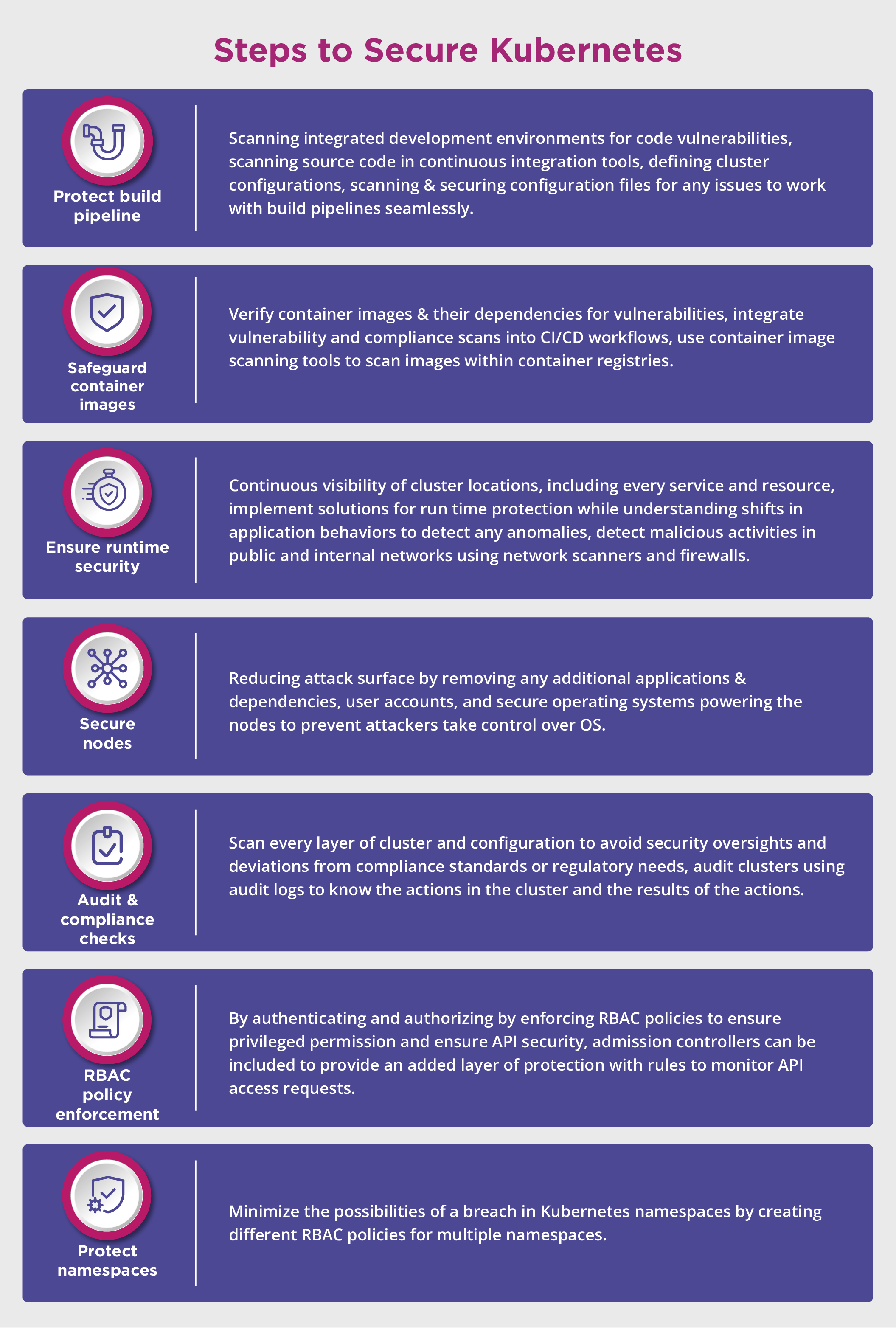Containers do pack a punch. Its attributes of using fewer hardware resources, better portability, operational consistency, greater efficiency, and the ability to accelerate application development made it an instant delight to the development community. However, containers had their limitations. Containers could not manage applications consisting of multiple containers across hosts.
This is where Kubernetes stepped in and showcased its ability to orchestrate containerized applications and workloads by scheduling the containers into a computing cluster and running them as per developer needs. Kubernetes, by design, is infrastructure independent and ties together software development and operations. Being a part of the CI/CD pipeline, It can enable developers to make changes to production without any interruption.
However, the security of Kubernetes needs a serious relook. It has become increasingly difficult to secure clusters and layers in a Kubernetes environment because of limited security features. A massive platform with many integrations, a robust security strategy is necessary to recognize the vulnerabilities and identify the solutions needed to fix them, irrespective of the cluster size and the infrastructure used to host it.
Some of the security challenges include cluster vulnerabilities, coding flaws that can appear in container runtimes, improper configuration of API server, vulnerabilities in OS running on Kubernetes nodes, to name a few. Issues can even show up while configuring Kubernetes workloads; these include exposure of edge services to the public domain of the internet, which can lead to data exposure, and unwanted privileges to containers can lead to malicious access to clusters lead to untold damage.
A multifaced approach is required to secure the different components, layers, and services from different risks.

Here are a few commonly used open-source DevSecOps tools that can enable the build and deployment of secure containerized applications in Kubernetes.
| Tool | Description |
| Kube-bench | The most widely used open-source tool to verify Kubernetes deployment settings against recommended CIS benchmarks. Ideal for securing control plane components and assuring SLA compliance while ensuring maximum functioning time and availability. |
| Kube-hunter | Used to detect misconfigurations and verify domains or addresses in Kubernetes open ports to prevent exposure to any attacks. |
| KubeLinter | A static analysis tool to scan and verify whether YAML and Helm charts follow DevOps best practices to ensure production readiness and security. It has built-in default checks and be configured to run customized checks. |
| Open Policy Agent (OPA) | A preferred choice by many to secure Kubernetes, it uses a general-purpose policy engine to apply security policies based on a specific context. |
| Terrascan | A static code analyzer that leverages OPA and has various security policies to enable best practices across applications to detect vulnerabilities, risks, and compliance violations. |
| Checkov | A static code analyzer used to check misconfigurations, enforce security policies, and reduce workload risks in cloud and IaC systems. |
| Falco | Checks runtime events and ensures runtime security, leverages Kubernetes data including kernel events to identify threat behaviors in applications, and inform users of any violations. |
| Clair | A static analysis tool used to scan containers and docker images for security issues and notify users of vulnerabilities. |
A cloud-native technology, Kubernetes can strengthen DevSecOps practices and is also the emerging standard for application management in cloud or hybrid environments. DevOps team must integrate the proper guardrails, controls, and security tools in workflows and combine them with people and processes to enhance analysis and remediation of security issues in Kubernetes across the development lifecycle.
To know more about DevSecOps and Application security management, talk to our experts at: contact@aujas.com





